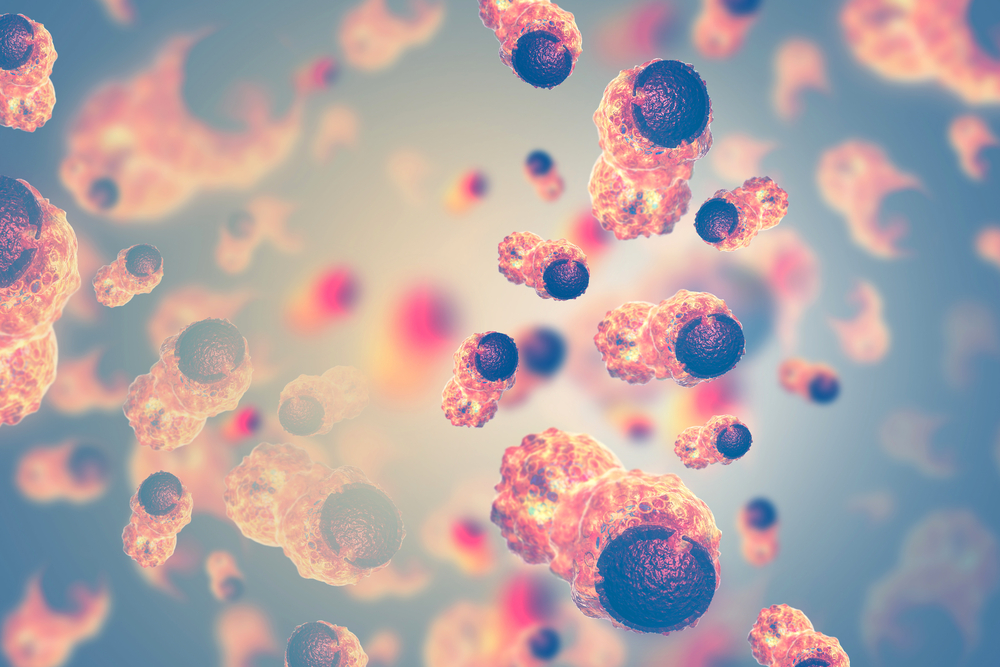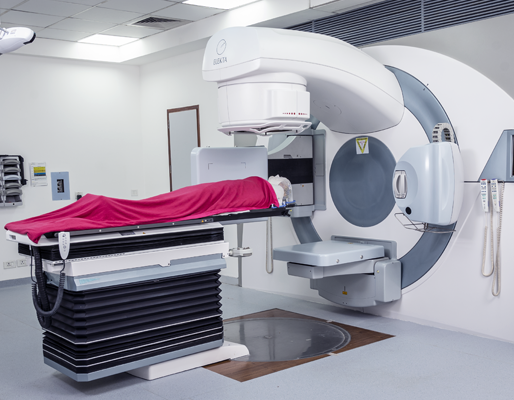Linear Accelerator is the most commonly used device for external beam radiation treatment of patients suffering from cancer. It generates high energy X-rays and directs them to the location of the tum.....
Linear Accelerator is the most commonly used device for external beam radiation treatment of patients suffering from cancer. It generates high energy X-rays and directs them to the location of the tumour. The rays destroy the cancer cells while saving the normal tissues surrounding the tumour. Linear Accelerator technology is nothing less than a boon to cancer patients. Providing a non-invasive and painless way of treatment, Linear Accelerators have proved to be of great help. The technology has an aid to itself in the form of IGRT and IMRT. IGRT uses imaging with the therapy to increase the efficiency by improving the precision and accuracy of the treatment procedure. The IMRT therapy uses high-edged software and sophisticated hardware to vary the intensity and shape of radiation used for different parts of the treatment area.
Linear Accelerators are generally used for external beam radiation treatment for patients with cancer. It can be used to treat all the parts and organs of the body infected with cancer cells.Discovery of Linear Accelerators has been of great help to patients afflicted with cancer. No surgery is required for the treatment.
-
In combination with other treatment options of cancer

-
To shrink down a cancerous tumour before the surgery


Preparing for Radiation Therapy
- Preparation for radiation therapy begins with the process of simulation. The patient will be asked to get in the gown provided by Medanta and lie down still on the table.
- During simulation, the patient is scanned and a thorough imaging is done to locate the tumour and normal cells around it. During simulation, it becomes imperative to ensure that the patient remains in the exact same location while the treatment is delivered.
- Body moles, head masks and even tattoos are used for precise positioning. After the simulation is over, the oncologist at Medanta decides the exact area to be treated, the amount of radiation, radiation for normal cells and the angle of the delivery.

During the Radiation Therapy
- Once the details from simulation are obtained, a plan is devised on the basis of the information. The therapy is divided into a number of individual treatments, by delivering a small dose of radiation daily, over several weeks. The course ranges from one to seven weeks.
- During the procedure, the patient is made to lie down on the table, which can move in all directions. The machine directs the X-rays on the area to be treated. The radiographer operates the machine and the patient can talk to him/her via intercom.
- The procedure requires the patient to remain as still as possible. It takes only a few minutes each day and is completely painless. In the first week of therapy and for the coming weeks, the staff and oncologist ensures that the therapy continues in synchronisation with the devised plan.

After the Radiation Therapy
- During the treatment phase, the patient is monitored closely for treatment schedule, doses and general health. The patient will undergo some imaging tests so that the doctor can figure out the efficiency of imaging tests.
- If the patient feels allergic to radiations or observes any side effects, which happens rarely, the same should be conveyed to the doctor or the oncologist.
Although the Linear Accelerator technology has been beneficial to uncountable cancer patients, it does come with its own pack of risks.
-
IGRT, the imaging technology takes pictures before and even when the therapy is in progress to ensure precision and accuracy of the treatment delivered. It also reduces the treatment toxicity. Using 3-D computed tomography images of the patients with computerised specific calculations; IMRT allows the radiation to be precise and accurate. The therapy can also be used to shrink the tumour before the surgery. Radiation therapy can be used in combination with the chemotherapy for better results. Radiation therapy is also used after the surgery to treat cancer cells that might have been left. A session usually takes 15 to 30 minutes and is generally given on outpatient basis. No hospital stay is required


• The X-rays generated by Linear Accelerators kill the DNA of the cancer cells. DNA is the molecule that carries the genetic information from one generation to another. Once the DNA is damaged, cancer cells stop dividing and eventually die.
• The radiation therapy can also damage normal cells; hence, it is combined with IGRT and IMRT to increase the efficiency and accuracy of the target cells.
• The technology at Medanta, i.e. Elekta infinity/Elekta Synergy is a true combination of precision, speed and control. The technology even lets you personalise your treatment and imaging workflows.
• It is the seventh generation integrated digital control system with proven assurance of performance and safety.

